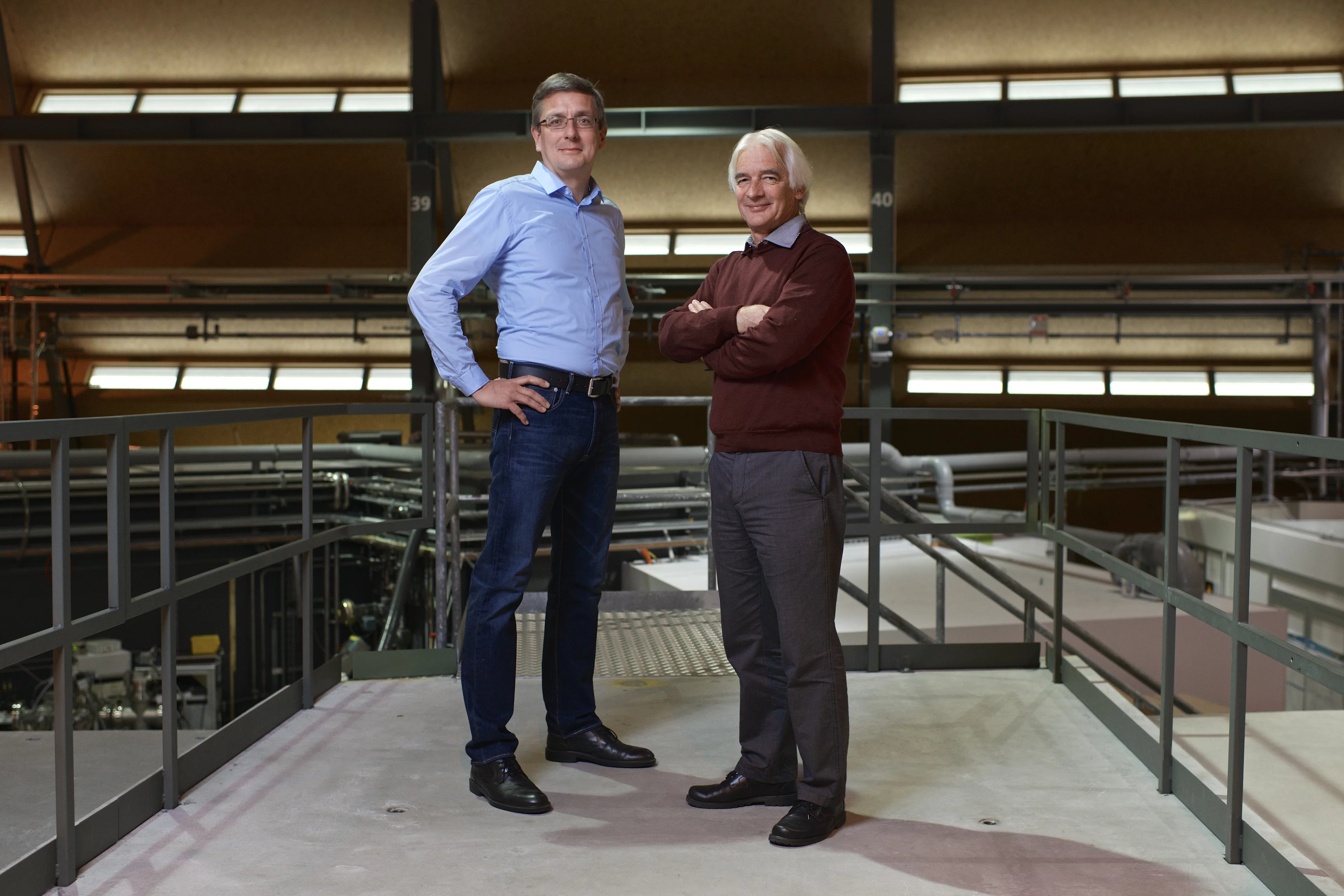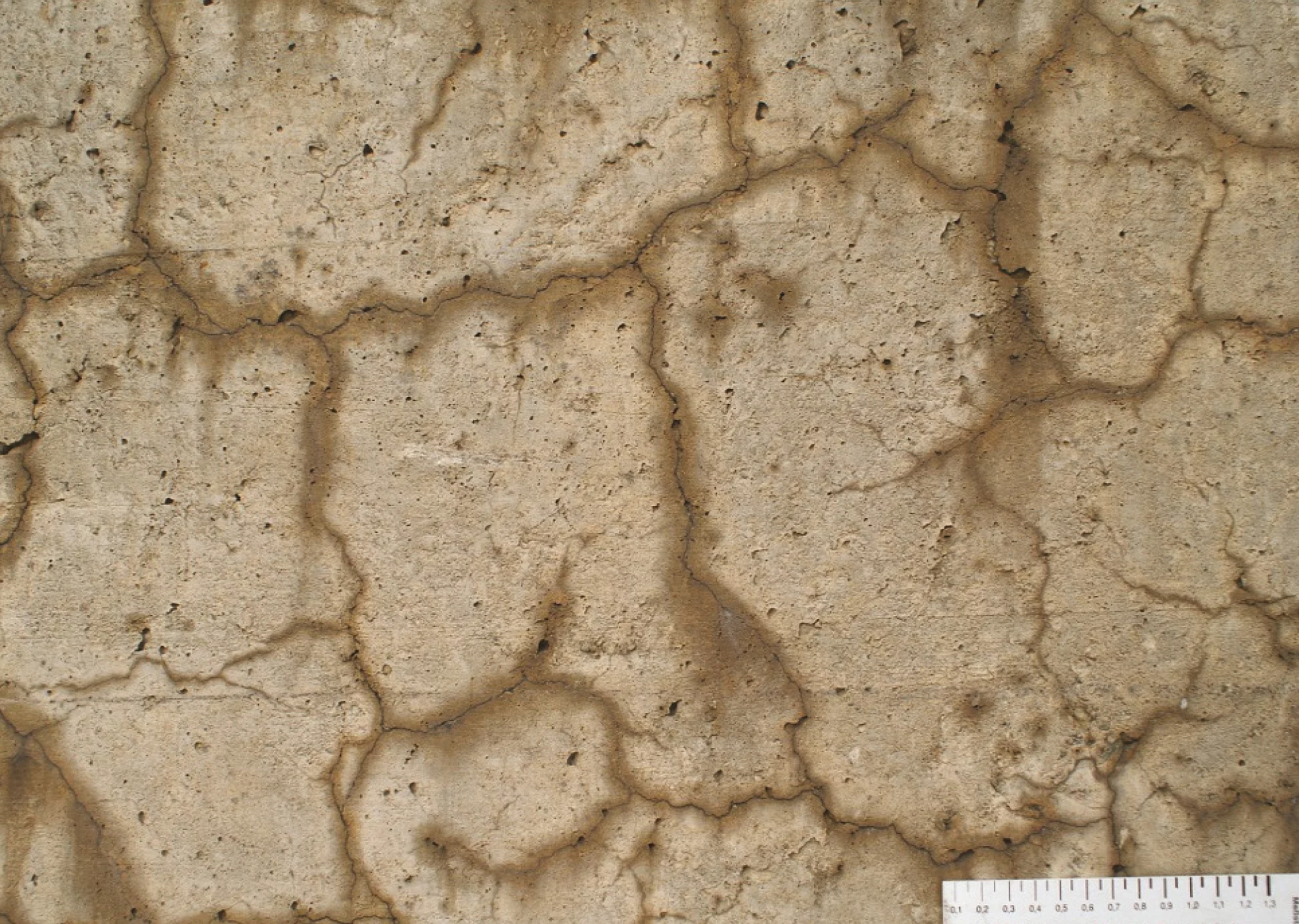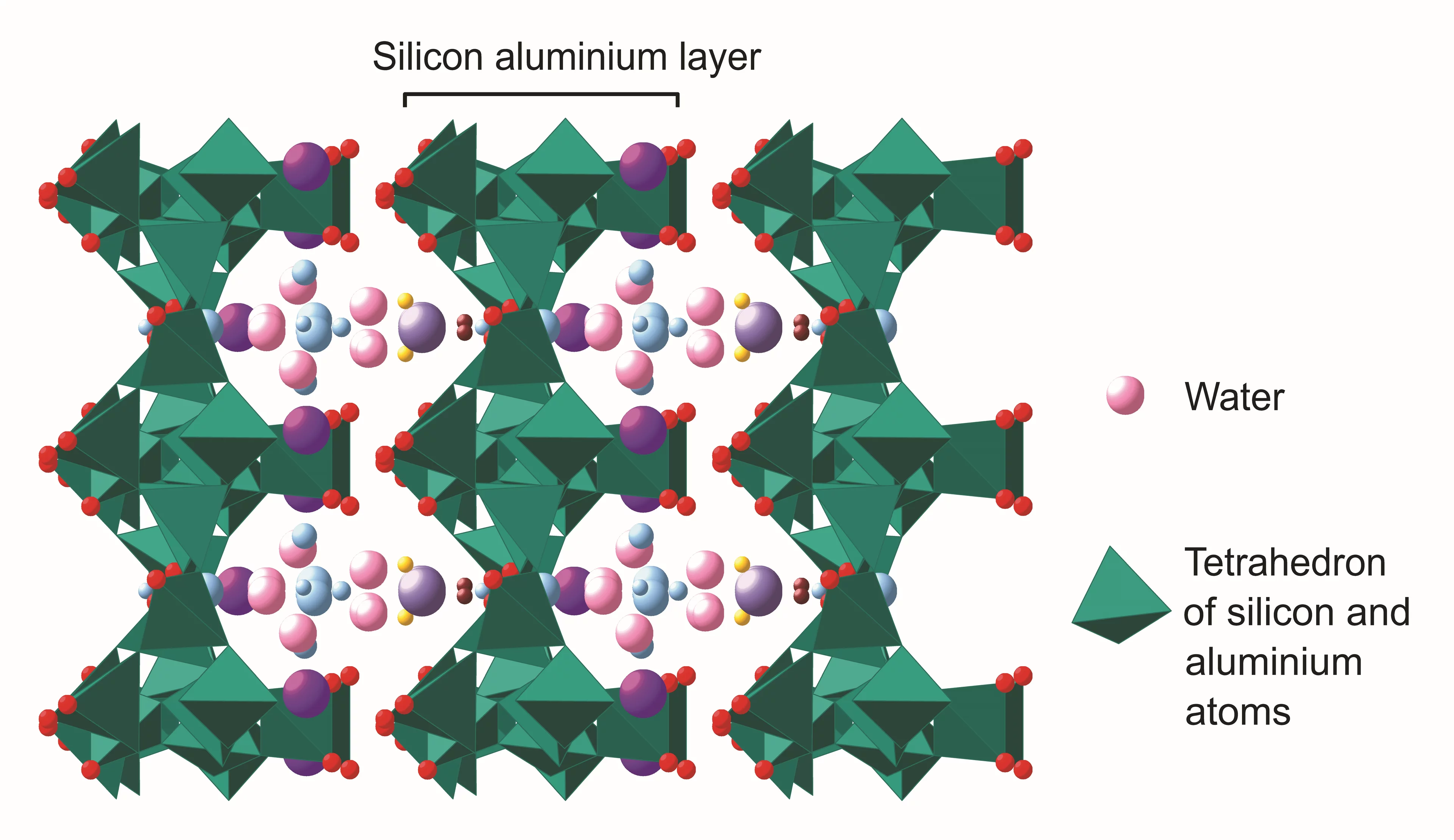When bridges, dam walls and other structures made of concrete are streaked with dark cracks after a few decades, the culprit is AAR: the alkali-aggregate reaction. Also called the concrete disease or even concrete cancer, it is a chemical reaction between substances contained in the material and moisture seeping in from outside. AAR damages concrete structures all over the world and makes complex renovations or reconstructions necessary. Researchers from the Paul Scherrer Institute PSI and Empa have now solved the structure of the material produced in the course of AAR at atomic level – and have thereby discovered a previously unknown crystalline arrangement of the atoms. They have now published their results in Cement and Concrete Research, the top journal in the field of building material research.
concrete disease: close-up of cracks in concrete caused by the alkali-aggregate reaction (AAR). (Photo: Empa/Andreas Leemann)
concrete disease. Infiltrated water causes the material to expand, cracking the concrete from within and gradually leading to dark fissures. (Source: Cement and Concrete Research, Vol. 79, R. Dähn et al., Application of micro X-ray diffraction to investigate the reaction products formed by the alkali-silica reaction in concrete structures, pp. 49–56, Copyright Elsevier (2015))
Researchers from the Paul Scherrer Institute PSI teamed up with colleagues from the Swiss Materials Science Lab Empa to study a degenerative sign of ageing in concrete: the so-called alkali-aggregate reaction (AAR). In the course of AAR, a material forms that takes up more space than the original concrete and thus gradually cracks the concrete from within as the decades go by.
The researchers have now explored the exact structure of this material. They managed to demonstrate that its atoms are arranged extremely regularly, making it a crystal. They also showed that the structure of this crystal is a so-called sheet-silicate structure. This specific structure had never been observed before. The researchers made their discovery thanks to measurements at the Swiss Light Source SLS at PSI. The research results could help towards the development of more durable concrete in future.
A global problem
AAR is a chemical reaction that affects outdoor concrete structures all over the world. It happens when concrete is exposed to water or moisture. For instance, numerous bridges and up to twenty per cent of the dam walls in Switzerland are affected by AAR.
With AAR, the basic ingredients in the concrete are actually the problem: cement – the main component of concrete – contains alkali metals such as sodium and potassium. Any moisture infiltrating the concrete – stemming for example from rainwater – reacts with these alkali metals, leading to an alkaline solution.
The second main ingredient in concrete is sand and gravel, which in turn are composed of minerals, such as quartz or feldspar. Chemically speaking, these minerals are so-called silicates.
The alkaline water reacts with these silicates and forms a so-called alkali calcium silicate hydrate. This is itself able to absorb more moisture, which causes it to expand and gradually crack the concrete from within. This entire process is referred to as AAR.
AAR takes place extremely slowly, so that the cracks are initially only tiny and invisible to the naked eye. Over the course of three or four decades, however, the cracks widen significantly and eventually jeopardise the durability of the entire concrete structure.
Most structures currently suffering from AAR were built between the 1960s and 1980s,
explains Erich Wieland, Head of the Cement Systems Group at PSI. The research community in Europe only became aware of the AAR problem in the 1970s.
A new crystal
Even if the chemical processes involved in AAR have long been known, nobody had identified the physical structure of the alkali calcium silicate hydrate formed in the course of AAR. The researchers at PSI and Empa have now managed to fill this knowledge gap.
They studied the substance of a Swiss bridge constructed in 1969, which has been affected heavily by AAR. Researchers from Empa cut out a material sample from the bridge and ground down a small piece of it until they were left with a wafer-thin sample that was merely 0.02 millimetres thick. The sample was then taken to the Swiss Light Source SLS and irradiated with an extremely narrow X-ray beam, fifty times thinner than a human hair. Performing so-called diffraction measurements and a complex data analysis, the PSI researchers were eventually able to determine the crystal structure of the material with pinpoint precision.
They found that the alkali calcium silicate hydrate has a previously undocumented sheet-silicate crystal structure. Normally, discovering an uncatalogued crystal structure means you get to name it,
explains Rainer Dähn, the first author of the study. But it has to be a crystal found in nature, therefore we didn’t get that honour,
says the researcher with a smile.
Andreas Leemann, Head of the Concrete Technology Group at Empa, had the idea for the current study. The researchers from PSI then brought their knowledge of the X-ray beam method to the table.
In principle, it’s possible to add organic materials to the concrete that are able to reduce the build-up of tension,
explains materials scientist Leemann. Our new results provide a scientific basis for these considerations and could pave the way for the development of new materials.
Text: Paul Scherrer Institute/Laura Hennemann
About PSI
The Paul Scherrer Institute PSI develops, builds and operates large, complex research facilities and makes them available to the national and international research community. The institute's own key research priorities are in the fields of matter and materials, energy and environment and human health. PSI is committed to the training of future generations. Therefore about one quarter of our staff are post-docs, post-graduates or apprentices. Altogether PSI employs 1900 people, thus being the largest research institute in Switzerland. The annual budget amounts to approximately CHF 380 million.
(Last updated on April 2015)
Contact
Dr. Rainer Dähn, Clay Sorption Mechanisms Research Group, Paul Scherrer Institute,telephone: +41 56 310 21 75, e-mail: rainer.daehn@psi.ch [German, English]
Dr. Erich Wieland, Cement Systems Research Group, Paul Scherrer Institute,
telephone: +41 56 310 22 91, e-mail: erich.wieland@psi.ch [German, English]
Dr. Andreas Leemann, Concrete/Construction Chemistry Laboratory, Empa,
telephone: +41 58 765 44 89, e-mail: andreas.leemann@empa.ch [German, English]
Original Publication
Application of micro X-ray diffraction to investigate the reaction products formed by the alkali-silica reaction in concrete structuresR. Dähn, A. Arakcheeva, Ph. Schaub, P. Pattison, G. Chapuis, D. Grolimund, E. Wieland and A. Leemann
Cement and Concrete Research 14 October 2015 (online)
DOI: 10.1016/j.cemconres.2015.07.012



